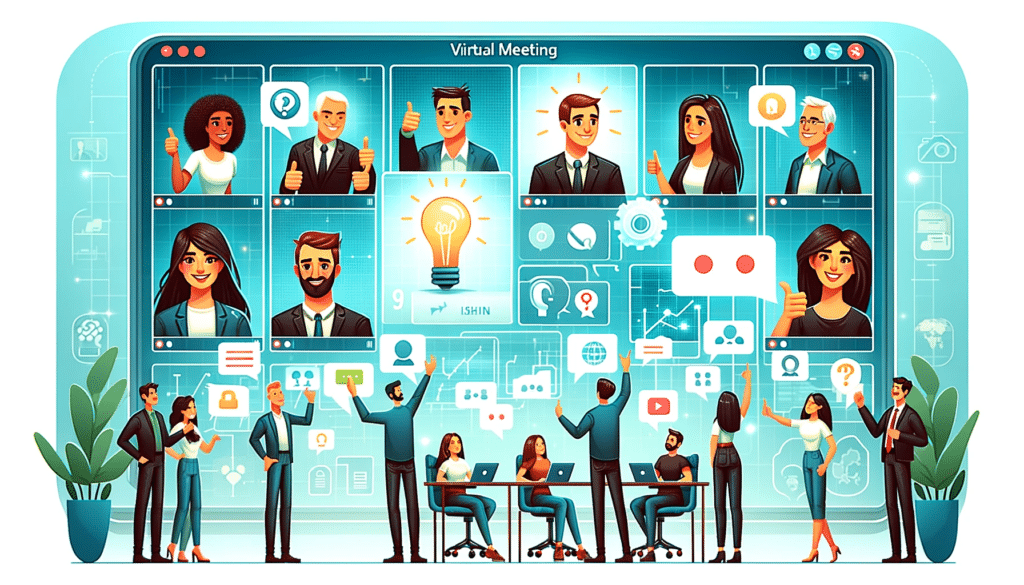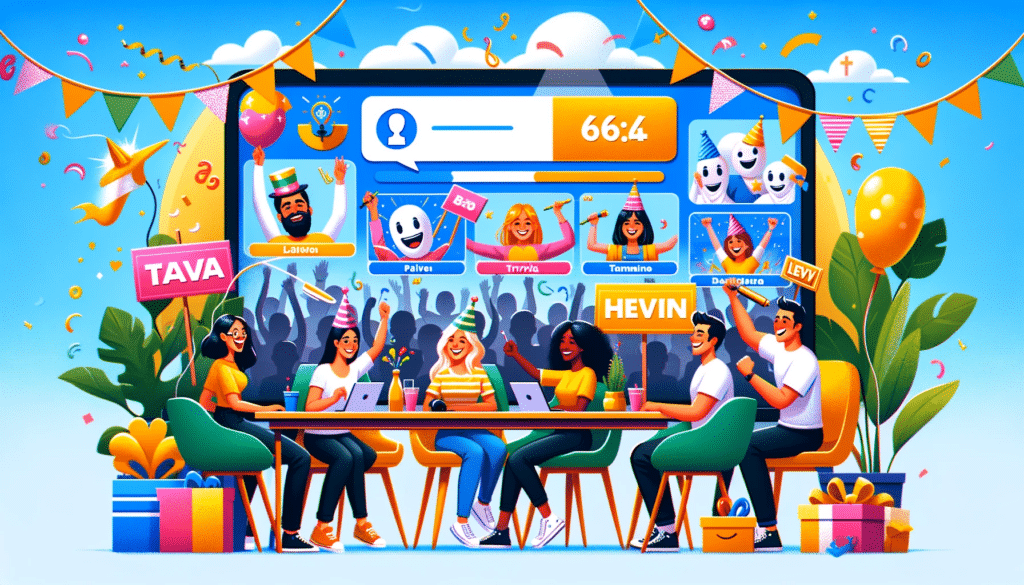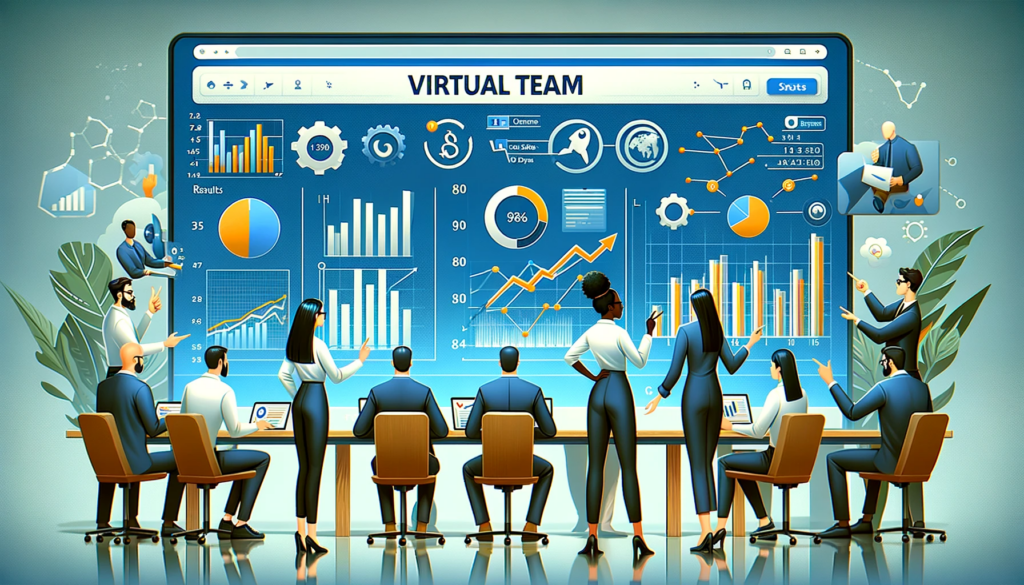In today’s evolving work environment, the shift towards remote work has become a fundamental change in our professional lives. This transformation, accelerated by global circumstances, has led to a significant portion of the workforce adapting to working from various locations outside the traditional office. While this shift offers unprecedented flexibility and access to a diverse talent pool, it also brings forth unique challenges. Addressing these challenges is crucial for strengthening remote teams, ensuring their effectiveness and unity in this new era of work.
One of the most crucial aspects of managing a remote workforce is maintaining a sense of team unity and collaboration despite the physical distances. This is where the concept of virtual team building comes into play, serving as a bridge to connect dispersed team members. Virtual team building activities are not just about fun and games; they are strategic tools that play a vital role in strengthening remote teams. These activities are designed to enhance communication, foster collaboration, and boost morale, all of which are essential for a productive and harmonious remote work environment.
As we delve deeper into this blog, we will explore the multifaceted impact of virtual team building activities on remote workforces. We’ll discuss how these activities can transform the dynamics of remote teams, making them more cohesive, communicative, and engaged. Understanding the power of virtual team building is key to unlocking the full potential of remote work, ensuring that distance is no barrier to effective teamwork and collaboration.
Understanding the Dynamics of Remote Workforces
The rise of remote work has been one of the most significant shifts in the global workforce over the past few years. Statistics show a steady increase in the number of people working remotely, a trend that has been greatly accelerated by the COVID pandemic. This new norm has brought to light both the advantages and challenges of remote working.
On the one hand, employees enjoy greater flexibility and a better work-life balance, leading to increased job satisfaction and reduced stress levels. Companies benefit from access to a wider talent pool and often report cost savings due to reduced need for physical office space. However, remote work also presents significant challenges, particularly in terms of team dynamics.
Communication barriers, feelings of isolation, and a lack of spontaneous collaboration that often occurs in physical office spaces are common. These challenges can lead to decreased productivity, a sense of detachment among team members, and potential misunderstandings. This evolving landscape underscores the importance of remote workforce building as a means to maintain a cohesive, efficient, and happy team.
The Concept of Virtual Team Building
Virtual team building is an innovative solution designed to address the challenges posed by remote work. It involves organising activities and exercises via digital platforms that aim to replicate the interaction, bonding, and collaborative spirit typically found in physical office environments. These activities range from simple get-to-know-you games to complex problem-solving tasks such as virtual escape rooms or virtual murder mystery activities and can be tailored to suit various team sizes and types.
The objective of virtual team building is multifaceted. It aims to improve communication, foster a sense of belonging, encourage collaboration, and ultimately enhance overall team performance. By engaging in these activities, team members get a chance to break down formal work barriers, understand each other’s strengths and weaknesses, and build trust – all crucial elements for a successful remote team.
Incorporating virtual team impact strategies into regular team interactions can significantly enhance the remote working experience. These strategies not only help in mitigating the feeling of isolation but also promote a culture of inclusivity and engagement, essential for remote teams’ success.
Enhancing Dialogue: How Virtual Team Building Strengthens Remote Team Communication
Effective communication is the cornerstone of any successful team, and in a remote setting, its importance is amplified. Virtual team building activities are specifically designed to enhance communication skills in a fun and engaging manner. For instance, activities like virtual escape rooms or virtual team quizzes require team members to communicate clearly, listen actively, and articulate their thoughts concisely to succeed.
These activities also provide an opportunity for team members to interact in a non-work context, which can lead to more open and honest communication. They help in breaking down formal hierarchies and encourage a more free-flowing exchange of ideas. This improvement in communication is not just limited to the duration of the activity but extends to everyday work interactions, thereby strengthening remote teams.
Moreover, regular virtual team building sessions can help in identifying and addressing any communication gaps within the team. They offer a safe space for team members to express their thoughts and opinions, which can be invaluable for managers looking to improve team dynamics and ensure everyone feels heard and valued.
Digital Synergy: Collaborative Strategies for Strengthening Remote Teams
Collaboration is a key ingredient for any successful team, and in a remote environment, fostering this sense of teamwork can be challenging. Virtual team building activities are designed to simulate and encourage the collaborative spirit that is often more naturally fostered in a physical office. These activities require team members to work together towards a common goal, often necessitating a blend of diverse skills and perspectives.
For instance, a virtual team project might involve members from different departments collaborating via a platform such as Zoom to solve a complex problem or create something new. This not only enhances the virtual team impact but also helps break down silos within the organisation. Team members learn to appreciate different viewpoints and expertise, leading to a more integrated and effective team.
Moreover, these activities can be tailored to address specific collaborative challenges that a team might be facing. Whether it’s improving joint decision-making, enhancing creative brainstorming, or simply getting team members more accustomed to working closely together, virtual team building can be a powerful tool in strengthening the collaborative fabric of a remote team.
Boosting Morale and Engagement in Remote Teams
Maintaining high morale and engagement in a remote team is crucial for both productivity and overall job satisfaction. Virtual team building activities play a significant role in this aspect by providing a fun and engaging way for team members to connect with each other beyond work-related tasks. Activities like virtual happy hours, online talent shows, or themed photo challenges add a human element to the remote working experience, which is essential for strengthening remote teams.
These activities help create a more enjoyable and relaxed environment, which can be particularly beneficial in alleviating the stress and monotony that can sometimes accompany remote work. They also serve as a platform for employees to showcase their personalities and talents, which might not be as visible in a typical work setting. This not only boosts individual morale but also helps in building a more cohesive and supportive team culture.
Furthermore, celebrating team achievements and milestones virtually can also contribute significantly to team morale. Recognising individual and team successes in a remote setting ensures that accomplishments are acknowledged and celebrated, reinforcing a sense of belonging and appreciation within the team.
Assessing Success: The Impact of Virtual Team Building on Strengthening Remote Teams
To understand the true value of virtual team building, it’s important to measure its impact on the team and the organisation. This can be done through various methods, such as surveys, feedback forms, and by monitoring key performance indicators. Employee engagement surveys conducted before and after team building activities can provide insights into how these events are affecting team morale and cohesion.
Productivity metrics, such as project completion rates and quality of work, can also indicate the effectiveness of virtual team building. An increase in productivity and a decrease in errors or misunderstandings can often be traced back to improved communication and collaboration fostered by these activities.
Additionally, tracking employee retention rates can offer a long-term view of the virtual team impact. Teams that engage in regular virtual team building activities often report higher job satisfaction, which can lead to lower turnover rates. This not only saves the company the cost and time associated with recruiting and training new employees but also contributes to a more experienced and cohesive team.
Best Practices for Implementing Virtual Team Building Activities
Implementing virtual team building activities successfully requires thoughtful planning and consideration of the team’s unique dynamics. Here are some best practices to ensure these activities are effective and enjoyable:
Understand Your Team’s Needs: Before planning activities, assess the specific needs and preferences of your team. Consider factors like team size, diversity, time zones, and individual personalities. This understanding will help in choosing activities that everyone can participate in and enjoy.
Diversity in Activities: To keep the team engaged, vary the types of activities. Mix educational workshops with fun games, creative challenges with problem-solving tasks. This variety ensures that different team members’ interests and strengths are catered to.
Regular Scheduling: Consistency is key. Schedule virtual team building activities regularly, whether weekly, bi-weekly, or monthly, to maintain team cohesion and engagement. Regular interactions help in building and maintaining strong team relationships.
Inclusivity: Ensure that activities are inclusive and accessible to all team members. Consider any physical or technological limitations and provide alternatives where necessary. An inclusive environment ensures that every team member feels valued and part of the team.
Feedback and Adaptation: After each activity, gather feedback from the team. This feedback is crucial for understanding what works and what doesn’t, allowing for continuous improvement of the team building process.
Professional Facilitation: Sometimes, bringing in a professional facilitator can add value to the activities. Facilitators who specialise in virtual team building can provide unique and engaging experiences that might be difficult to achieve internally.
By following these best practices, virtual team building activities can become a powerful tool in remote workforce building, leading to a more cohesive, communicative, and productive team.
Conclusion
In the ever-changing landscape of work, the importance of team cohesion and morale in a remote setting cannot be overstated. Virtual team building activities play a crucial role in strengthening remote teams, fostering a sense of community, enhancing communication, and boosting overall team morale. These activities are not just a temporary fix but a fundamental component of a successful remote work strategy.
As we have explored, the benefits of virtual team building are numerous. From improving collaboration to boosting morale, and from enhancing communication to providing a platform for creativity and fun, these activities are essential in bridging the physical gap between remote team members. By implementing the best practices outlined above, organisations can ensure that their remote teams are not just functioning but thriving.
White Rhino Events understands the nuances of remote team dynamics and specialises in virtual team building experiences. Our range of activities is designed to meet the unique needs of your team, ensuring that each member feels connected, valued, and engaged. Let us help you in building a stronger, more cohesive remote workforce, ready to face the challenges of the modern work environment.





